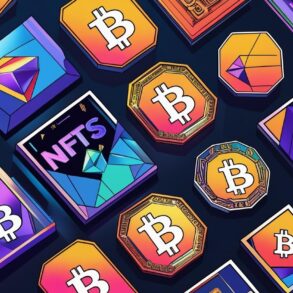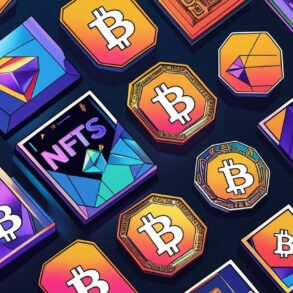
In today’s Finshots, we tell you why art fetches millions or even billions of dollars. And spoiler alert: it’s not as straightforward as it seems.
Also, if you’re someone who loves to keep tabs on what’s happening in the world of business and finance, then hit subscribe if you haven’t already. If you’re already a subscriber or you’re reading this on the app, you can just go ahead and read the story.
The Story
The Mona Lisa is worth close to a billion dollars. But who decides the value of art, anyway?
Is it the artist’s fame? The rarity of the work? The materials used? Or maybe it’s the story behind it — like a piece once owned by a celebrity could make it irresistible to collectors willing to splurge millions.
But none of this logic applies to ‘Comedian’, or as you probably know it, the ‘duct-taped banana’.1 This cheeky creation by Italian artist Maurizio Cattelan isn’t exactly what you’d call classic art. It’s literally a banana stuck to a wall with silver duct tape. And yet, it just sold for a staggering $6.2 million at Sotheby’s auction house. Yup, you read that right.
Think about it. The banana itself probably cost 35 cents at a fruit stall outside Sotheby’s on the day of the auction. If you do the math, its value shot up by an absurd 18 million percent!
So, how on earth did this happen, you ask?
Well, if you look at it from the lens of Justin Sun, the buyer of the $6 million “duct-taped banana” and founder of the cryptocurrency Tron, this wasn’t just art. It was an idea. For him the banana apparently represented the connection between art, meme culture and the crypto community. It’s what’s called conceptual art, meant to challenge how we think about value.
The banana might show how value isn’t fixed but shaped by culture. And since memes highlight the absurdities of modern life, linking them with art makes it relatable to younger, tech-savvy folks. For the crypto crowd, it’s a way to show how something unusual and intangible, like Bitcoin or even Tron, can hold incredible value.
Sounds bizarre?
Sure. But here’s the thing. Sun didn’t just buy a banana, he bought attention. Tron’s popularity skyrocketed after the purchase, with its value jumping 10% and hitting an all-time high since its 2018 debut.2 Its market capitalisation (total value of Tron coins in the market) reached a staggering $18 billion.3 That’s over $1 billion added in just a couple of days!
But hey, that’s just how it looks from the outside. What no one’s talking about is how artworks can double or even triple in value, fetching millions or even billions through the murky world of art laundering.
The truth is, the skyrocketing prices of artwork often have little to do with subjective value, abstract concepts or prestige. Instead, the art market provides a convenient loophole for wealthy individuals to launder money or hide the origins of illicit funds. And it works like a charm.
For starters, there’s no universal method to price art. It’s all subjective, which means you can buy or sell art at any price you like. This lack of standardisation creates the perfect cover for moving questionable money around.
But that’s not the only advantage of the art world. It’s also shockingly underregulated, which means you can buy an artwork with a suitcase of cash, and do it all anonymously.
Why? Because collecting art is like owning treasure. If people know you own it, the chances of theft shoot up. So, to protect identities, the art world offers complete anonymity.4 Auction houses and galleries won’t reveal the buyer or seller’s name unless they get explicit permission, or even enough money to keep their identity tightly locked up.
And here’s where things get even shadier. Imagine a money launderer uses $10 million in black money to buy a painting — anonymously, of course. They don’t need to hang it in their living room to make it legit. Instead, they can send it to a ‘freeport’.5 For the uninitiated, these are storage facilities near airports for goods in transit or items shipped by a seller but not yet received by the buyer.
But in the art world, they’ve become loopholes. Since these spaces don’t fall under any specific country’s jurisdiction, they’re essentially tax-free zones. So the money launderer parks the painting there and waits. Eventually, another buyer — real or not — purchases the piece for an inflated price. Ownership changes hands, but the artwork doesn’t move an inch.
Suddenly, that $10 million has turned into ‘clean’ money, and no one’s asking questions. This game can repeat endlessly, with the price of the art skyrocketing each time.
And that, folks, is how art magically gains its so-called ‘subjective’ value.
That’s exactly why countries are scrambling to put anti-money laundering laws in place, keeping a close eye on suspicious activity in the art world.6
Take Mexico, for example.7 Back in the early 2010s, the government passed a law requiring more transparency about buyers and limits on how much cash could be spent on a single artwork. The result? The art market plummeted. Sales dropped by 70% in less than a year mostly because Mexican cartels were some of the biggest buyers in the market.
More recently, the US introduced the Anti-Money Laundering Act of 2020 (AMLA 2020), which forces antiquities businesses to identify the true owners of art, maintain transaction records and regularly audit their compliance.
The European Union’s 2020 Anti-Money Laundering (AML) Directives also require art dealers to perform due diligence on customers and report any transactions over €10,000. If they’re trading or storing artwork valued at over that amount, they need to follow strict rules.
So yeah, hopefully, with laws like these, the days of money laundering in the art world will be numbered.
But that being said, we know what you’re thinking. Could this duct-taped banana be part of some clever, shady deal, too?
Well, we can’t tell for sure, especially considering that Cattelan made three editions of Comedian.
Sidebar: Conceptual art is all about ideas, not just physical pieces. So in Comedian’s case, what the artist sells isn’t a duct taped banana, but a certificate of authenticity and a set of instructions for the owner on how to maintain or even recreate the artwork — like how to tape the banana, where to place it, how high off the ground it should hang, and, of course, how often to the banana must be replaced, since, you know, it’s a real fruit that’ll eventually rot.
And here’s where it gets interesting. If you look closely enough, the version that Justin Sun bought for $6 million had quite the ownership journey.8 It was originally sold in 2019 by New York’s Galerie Perrotin to an anonymous buyer, then passed on to White Cube gallery, and eventually made its way to Sun via Sotheby’s, who gets a commission for making the sale happen.
Now, we’re not saying that this version of Comedian is caught up in some art money-laundering scheme.
But let’s be honest. When ownership trails involve an element of mystery, they have a knack for driving up prices, no matter how bizarre or downright wacky the artwork might be.
Until next time…
Don’t forget to share this story on WhatsApp, LinkedIn and X.
📢Read ‘The Little Book of Indian Business’ by Finshots yet? We’d love to have a chat!
Just like with everything we do, we want to get your thoughts, feedback and suggestions about our debut book. Fill out this quick form and we’ll get in touch with you soon. Thanks in advance 🙂
Story Sources: The New York Times [1], U Today [2], Forbes [3], The New Indian Express [4], The Economist [5], Comply Advantage [6], Art & Object [7], Sotheby’s [8]
This post was originally published on this site be sure to check out more of their content








